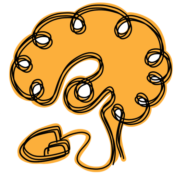Maintaining data consistency across related records is essential in Salesforce—especially when ownership drives visibility, access, and accountability. One such important relationship exists between Accounts and Contacts. When an Account owner changes, it’s best practice to automatically update the owners of all related Contacts as well.
This blog presents an optimized version of this automation using Map-based logic, which makes the update process more efficient, especially in bulk operations. This technique ensures that every related Contact reflects the correct ownership without unnecessary overhead, leveraging one of Apex’s most powerful tools: the Map collection.
The logic executes in the after update context and ensures that only affected Contacts are updated.
🧠 Why This Trigger Is Important
In many Salesforce orgs, Contact ownership plays a critical role in:
-
Sharing rules and visibility
-
Reporting structures
-
Workflow triggers and automations
-
Lead routing or service assignments
-
Ensuring accountability in communication and follow-ups
When Accounts are reassigned (which happens often in sales orgs), Contacts must follow—otherwise, data becomes fragmented, visibility is lost, and users start to distrust CRM integrity.
Without automation, this results in:
-
Manual reassignment of Contacts
-
Inconsistent ownerships across related records
-
Potential gaps in access and engagement
-
Messy dashboards and misleading reports
This trigger not only solves the problem but does so with a clean, efficient, and scalable design using a Map for optimal performance.
🔍 What This Blog Covers
-
How to detect when Account ownership changes
-
How to build a Map to isolate affected Accounts
-
How to retrieve and update related Contacts using that Map
-
Why Map-based logic improves performance and clarity
-
How this pattern aligns with Apex trigger best practices
The blog highlights the power of using Map<Id, sObject> when dealing with parent-child relationships in a trigger context.
🎯 Real-World Use Cases for This Trigger
-
Sales orgs where Account reassignments are frequent
-
Contact centers that depend on accurate record ownership
-
Teams using role-based sharing rules tied to OwnerId
-
Organizations transitioning between account managers
-
Any CRM setup that relies on automation for ownership hygiene
Keeping ownership aligned ensures that teams don’t lose context and that customer engagement continues seamlessly—even after internal changes.
👨💻 Developer & Admin Tips
Here’s how the trigger logic works step-by-step:
-
The trigger fires after Account updates.
-
It compares the old and new
OwnerIdvalues to detect ownership changes. -
For each changed Account, it adds the record to a
Map<Id, Account>. -
It then queries all Contacts whose
AccountIdmatches any key in the Map. -
Using the Map, it fetches the new owner from the corresponding Account and updates each Contact.
-
Finally, it performs a single DML operation to update all affected Contacts in one go.
This design brings several benefits:
-
Efficiency: Uses Maps for faster lookup instead of nested loops.
-
Bulk safety: Supports up to 200 Accounts and related Contacts in one execution.
-
Scalability: Easily extended to other related objects like Opportunities or Cases.
-
Clarity: Separates detection and update logic cleanly.
Enhancement ideas:
-
Add logic to skip Contacts that already have the new owner assigned
-
Apply this same pattern for other ownership syncing needs
-
Add a custom checkbox to Accounts to skip syncing for certain record types
-
Create a logging object to track when ownership syncs occur for auditing
Testing recommendations:
-
Update the Account OwnerId for one or more Accounts with multiple Contacts
-
Confirm that only affected Contacts are updated
-
Use debug logs to verify Map usage and value assignment
-
Validate with a batch update or data loader operation
This approach ensures performance doesn’t degrade as your data volume increases—especially in orgs with thousands of Contacts and frequent ownership changes.
🎥 Watch the Demo – YouTube Playlist
To see this trigger in action, head over to the Salesforce Makes Sense YouTube playlist. The demo includes:
-
A walkthrough of this exact Map-based solution
-
Comparisons between loop-based and Map-based performance
-
Practical advice on debugging and unit testing
-
Real-time updates of Account and Contact owner sync
The playlist is ideal for Salesforce developers and admins looking to build more efficient, best-practice-based automations.
Solution:
trigger AccountTrigger on Account (after update)
{ if(Trigger.isUpdate){ if(Trigger.isAfter){
AccountTriggerHandler.updateOwnerOfRelatedContact(Trigger.
new, Trigger.oldMap);
}
}
}
public class AccountTriggerHandler{ public static void
updateOwnerOfRelatedContact(List
accList,Map<Id,Account>oldMap){
List<Contact> conList= new List<Contact>();
Map<Id,Account> accToAccountMap= new Map<Id,Account>();
for(Account acc:accList){
if(acc.OwnerId!=oldMap.get(acc.Id).OwnerId){
accToAccountMap.put(acc.Id,acc);
}
}
for(Contact con:[SELECT AccountId,OwnerId FROM Contact
WHERE AccountId IN:accToAccountMap.keySet()]){
con.OwnerId=accToAccountMap.get(con.AccountId).OwnerId;
conList.add(con);
}
if(!conList.isEmpty()){
update conList;
}
}
}
